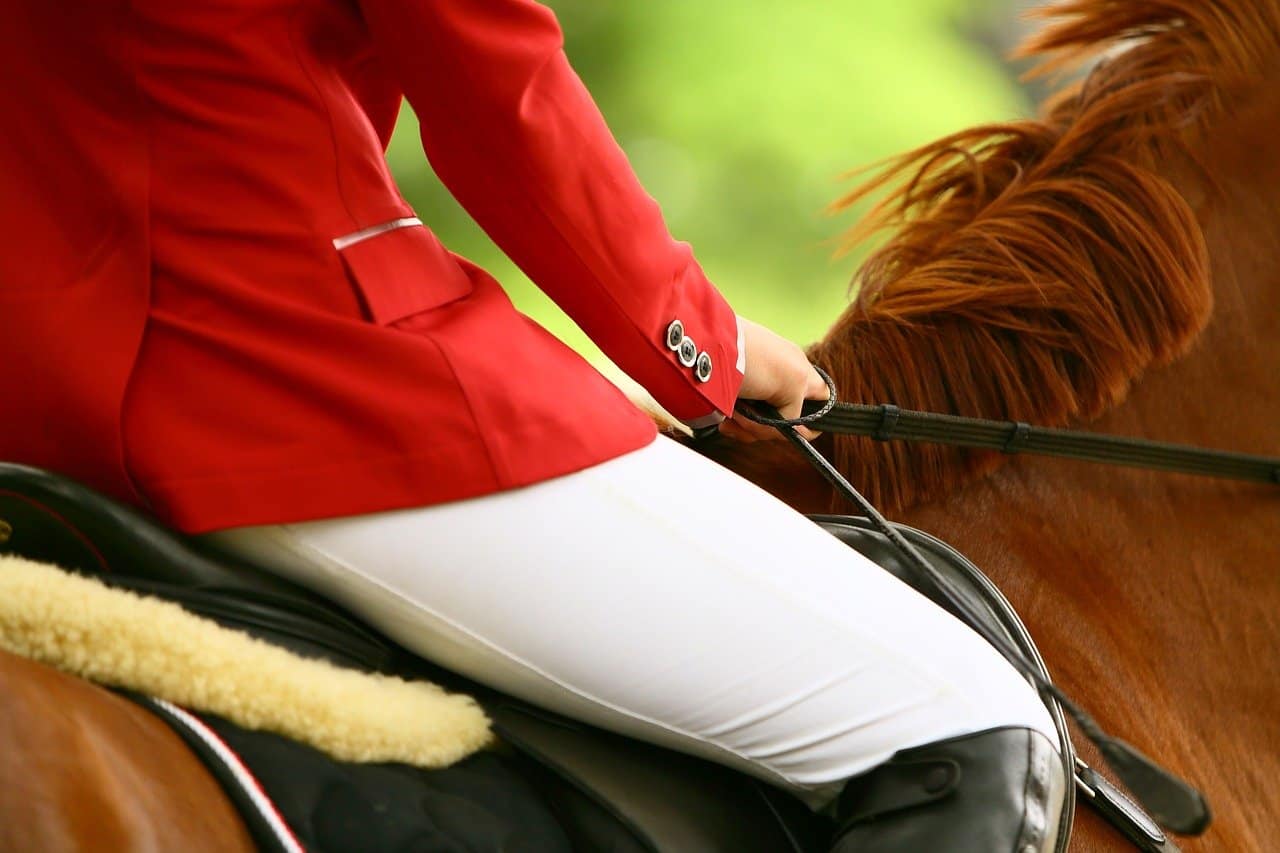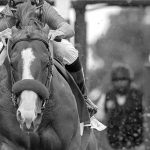This article is part 1 of 2, of Adaptive Development EQ’s Fundamentals Series, Fundamentals: On The Leg. To read Part 2, see: Fundamentals: On The Leg (Part 2 of 2).
THE LEG
At its most basic, the leg is one of the fundamental aids of riding (along with the rider’s weight, seat and hands) and their function is to queue forward and lateral movement. As the rider advances in skill, so too does the rider’s repertoire in the number of aids that can be given with the leg, and in the varying amounts of sensitivity, in which it is applied.
To open the doorway of this expanded toolbox, all riders strive for a strong and quiet leg, and much time is spent in the early years of riding to develop the leg correctly, for without it, the rider will encounter frustration later in their training. The most common bars to perfecting the leg are; lack of strength and lack of correct alignment. More often than one would think, a rider’s leg (and balance) problems can also be sourced to saddle fit or some other source of discomfort in the horse. We check saddle fit first:
EQUIPMENT PROBLEMS
There are many articles on the internet available on saddle fit, so assuming that the saddle satisfies all the major points (there is appropriate clearance in the gullet, the panels lay smoothly over the muscles of the back, the width is correct, etc), a horse’s back over its lifetime goes through many changes so check yours regularly. The most common problem to affect a rider’s position is a cantle that sits too low, but the opposite also happens and can be just as problematic to ride. Both will throw the rider out of balance. (Getting into the details of the twist, flap length, knee rolls, etc., can all have an affect on the rider’s comfort as well, but is outside of our scope here, on the positioning of the leg and it’s fundamental place in a rider’s arsenal.)
- When the cantle sits too low, the rider’s center of gravity falls slightly behind center. Riders that tend to get left behind in upward transitions, and riders whose leg constantly wants to be too far in front of the vertical alignment of hip and shoulder, should check if their saddle is imbalanced in this way. If the horse wheels sharply, this center of gravity will easily spin you out of the saddle (if you are a visual person, this is what bull riders call “getting flushed down the toilet”.) Though this is a defensive seat, and is often used intentionally when working with young horses, when unintentional, this imbalance will also put you into trouble with a rearing horse, due to the additional speed and strength required to get forward and upward in time to stay seated on a horse walking on its hind legs.
- When a cantle sits too high and the saddle slopes downward, this causes the rider’s center of balance to be too far forward and as you would expect, has just the opposite affect of the above. You would often be ahead of the horse in upward transitions, and never feel comfortable in staying seated if the horse were to drop it’s shoulder, prop, or kick high out with it’s hind legs.
An unwilling horse would soon figure out these are all easy ways to unseat you since your center of gravity is already sloped in the right direction for him to eject you! We give more extreme cases above to make it easier to visualize the part that the leg plays in having good balance, but in less volatile horses, the rider’s imbalance still translates to the horse. Even a quarter of an inch tilt in a saddle can cause you and your horse to feel uncomfortable, and once corrected, can make a tremendous difference in how secure you feel in the saddle, the ease in which you are able to execute a given aid, and how much more effective your aid is.
HORSE RELATED PROBLEMS
The way the horse travels can also affect the rider’s mechanical efficiency. Sore feet, sore shoulders, or an old injury causing the horse to protect one side more than the other, are a few examples. The more in-balance the horse; the more straight the horse; the easier and quieter the leg (and hands and seat!) Strive always for soundness. As a side note, I think it’s also worth it to mention here that horses with tremendous athletic ability and tremendous strides are also notoriously difficult to ride with stillness and (rider) comfort. To ride this type of horse and all others with aplomb? Read on. Herein lies the greatest aids to perfecting the leg: position and strength.
MAXIMIZING BIOMECHANICS
So, we’ve hopefully eliminated tack problems, and we have a sound horse, let’s work on the details. Though this will vary slightly on discipline and length of stirrup, a good general rule of thumb for the leg position is to have a straight line from hip to heel, and knee to toe, with weight placed in the heel. A foot that’s too far forward will put you into a “chair” position and consequently give you an unresponsive reaction time. Conversely, with a foot that’s too far behind your center of gravity, your response time becomes too reactive. (See a photo example of this in my article, The Canter Departure.)
A quiet leg is also one where the entire leg works in concert from heel to hip, with weight-bearing surfaces distributed throughout the length of the leg and foot, and a foot that “rests” on the stirrup bar. Here, the center of gravity going through the rider’s body should fall slightly behind the stirrup iron, at a spot between the weight in the heel, and the ball of the foot, and all of this while retaining a soft ankle. (The soft ankle is a seemingly small but important distinction in obtaining a quiet leg, for it acts as the last shock absorber in place for everything above it.)
This “middle point” of weight distribution between heel and ball of foot gives you a more responsive range of weight and balance-changes that allow you to efficiently shift between the two extremes of weight bearing on the balls of the foot, versus weight bearing entirely in the heel. A correct balance of leg and ankle pressure-distribution, center of gravity, and joint flexion maximizes the way your calves and inner thigh make contact with the saddle to better fit the contours of the horse. These increased contact points equal an increased ability to influence your horse. In fact, later in training, we see that having this tool in our repertoire allows us to influence the horse through the various types of pressure we apply to the stirrups alone, and this in turn has an influencing action on the saddle’s stirrup bars and consequently, the horse’s dorsal muscles.
To finish reading this article, click here to read Part 2 of the series: Fundamentals: On The Leg (Part 2 of 2)
Additional articles in the Fundamentals series include:
- Fundamentals: On the Leg (Part 1 of 2)
- Fundamentals: On the Leg (Part 2 of 2)
- Fundamentals: On the Seat (Part 1 of 2)
- Fundamentals: On The Seat (Part 2 of 2)

Euki is the founder of Adaptive Development EQ. She loves inspiring riders and owners through the developmental process of holistic, whole-horse training, and is on a mission to help them rediscover their horses and fall in love with them all over again.






